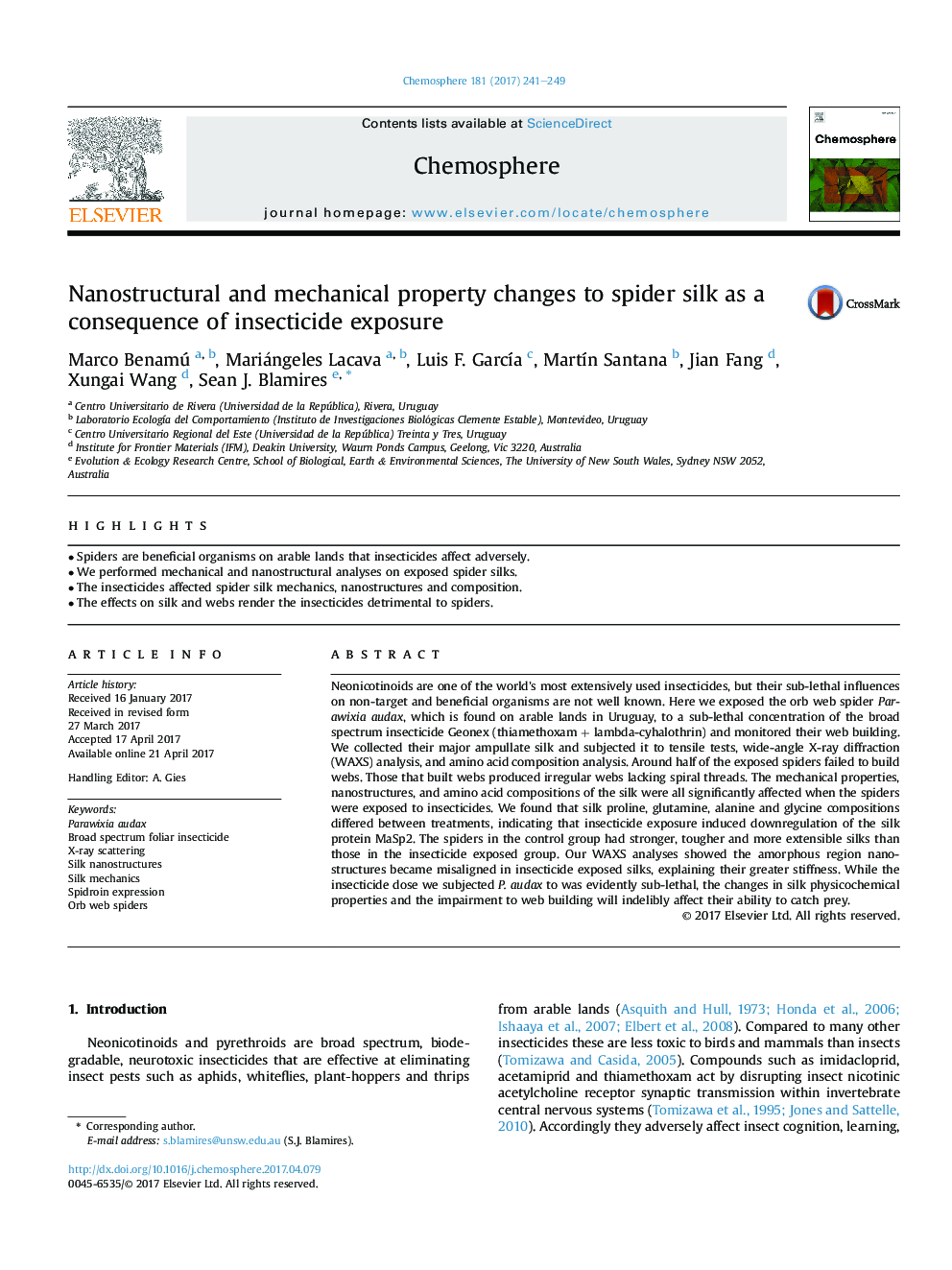| Article ID | Journal | Published Year | Pages | File Type |
|---|---|---|---|---|
| 5747134 | Chemosphere | 2017 | 9 Pages |
â¢Spiders are beneficial organisms on arable lands that insecticides affect adversely.â¢We performed mechanical and nanostructural analyses on exposed spider silks.â¢The insecticides affected spider silk mechanics, nanostructures and composition.â¢The effects on silk and webs render the insecticides detrimental to spiders.
Neonicotinoids are one of the world's most extensively used insecticides, but their sub-lethal influences on non-target and beneficial organisms are not well known. Here we exposed the orb web spider Parawixia audax, which is found on arable lands in Uruguay, to a sub-lethal concentration of the broad spectrum insecticide Geonex (thiamethoxam + lambda-cyhalothrin) and monitored their web building. We collected their major ampullate silk and subjected it to tensile tests, wide-angle X-ray diffraction (WAXS) analysis, and amino acid composition analysis. Around half of the exposed spiders failed to build webs. Those that built webs produced irregular webs lacking spiral threads. The mechanical properties, nanostructures, and amino acid compositions of the silk were all significantly affected when the spiders were exposed to insecticides. We found that silk proline, glutamine, alanine and glycine compositions differed between treatments, indicating that insecticide exposure induced downregulation of the silk protein MaSp2. The spiders in the control group had stronger, tougher and more extensible silks than those in the insecticide exposed group. Our WAXS analyses showed the amorphous region nanostructures became misaligned in insecticide exposed silks, explaining their greater stiffness. While the insecticide dose we subjected P. audax to was evidently sub-lethal, the changes in silk physicochemical properties and the impairment to web building will indelibly affect their ability to catch prey.
